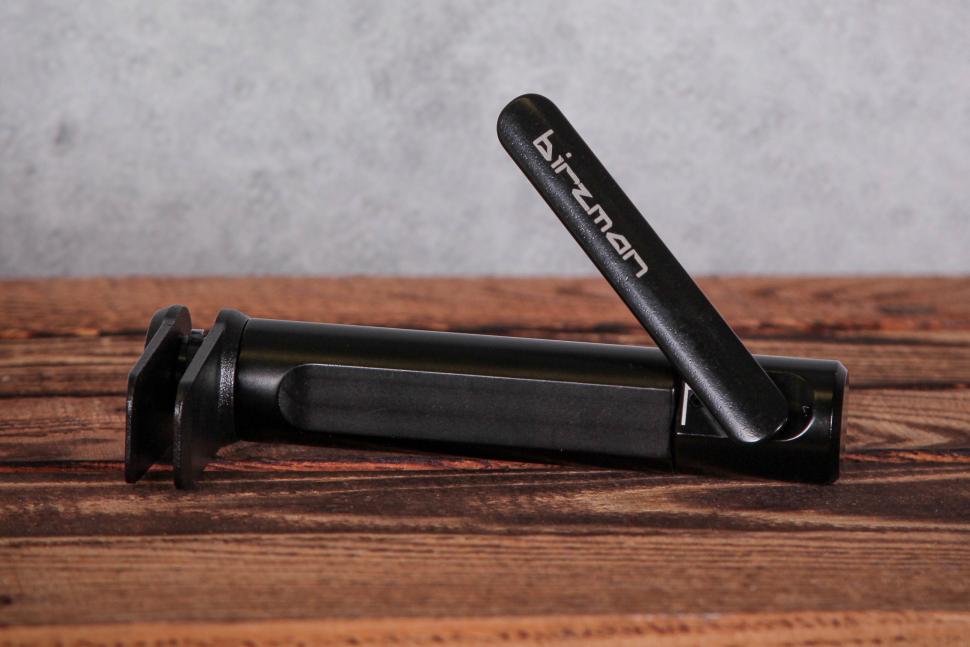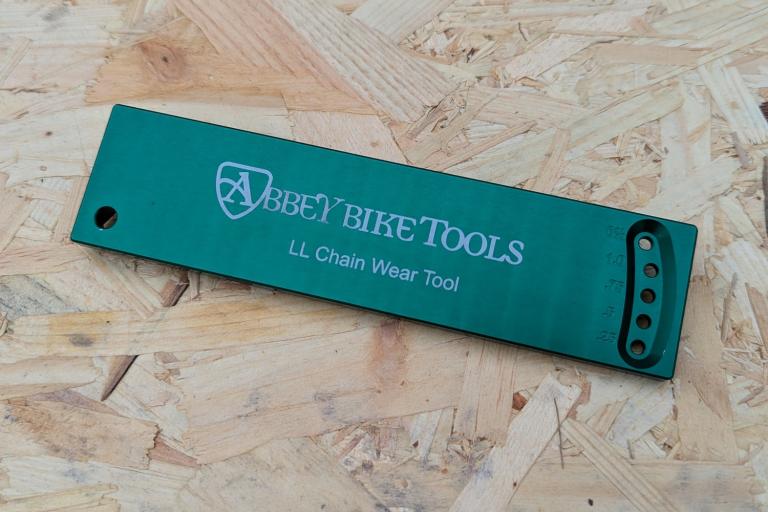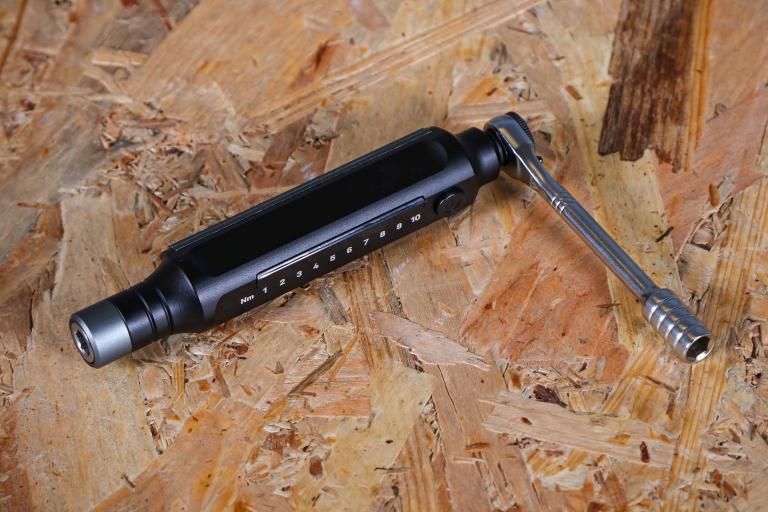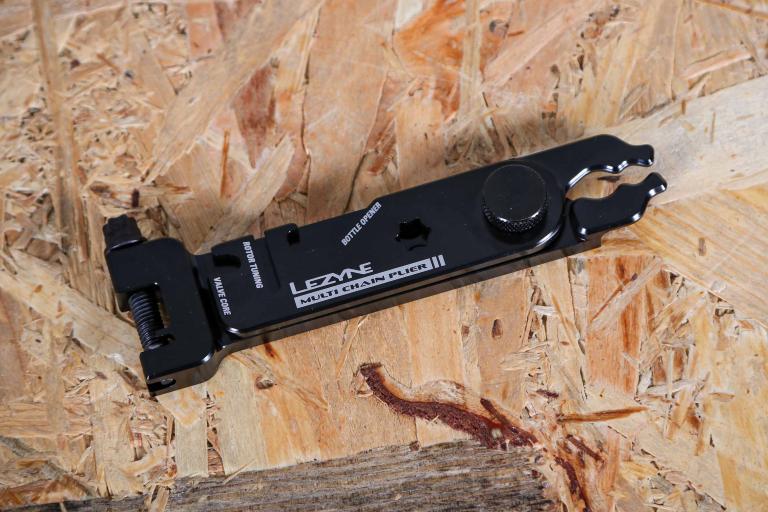- News
- Reviews
- Bikes
- Components
- Bar tape & grips
- Bottom brackets
- Brake & gear cables
- Brake & STI levers
- Brake pads & spares
- Brakes
- Cassettes & freewheels
- Chains
- Chainsets & chainrings
- Derailleurs - front
- Derailleurs - rear
- Forks
- Gear levers & shifters
- Groupsets
- Handlebars & extensions
- Headsets
- Hubs
- Inner tubes
- Pedals
- Quick releases & skewers
- Saddles
- Seatposts
- Stems
- Wheels
- Tyres
- Tubeless valves
- Accessories
- Accessories - misc
- Computer mounts
- Bags
- Bar ends
- Bike bags & cases
- Bottle cages
- Bottles
- Cameras
- Car racks
- Child seats
- Computers
- Glasses
- GPS units
- Helmets
- Lights - front
- Lights - rear
- Lights - sets
- Locks
- Mirrors
- Mudguards
- Racks
- Pumps & CO2 inflators
- Puncture kits
- Reflectives
- Smart watches
- Stands and racks
- Trailers
- Clothing
- Health, fitness and nutrition
- Tools and workshop
- Miscellaneous
- Buyers Guides
- Features
- Forum
- Recommends
- Podcast
review
 2022 Birzman Disc Brake Piston Pusher 1.jpg
2022 Birzman Disc Brake Piston Pusher 1.jpg£54.99
VERDICT:
Great idea that unfortunately is not delivered on by this tool in a reliable manner
Feels premium
Didn't work for most callipers
Difficult to get in place
Won't push four pistons squarely
Price
Weight:
213g
Contact:
At road.cc every product is thoroughly tested for as long as it takes to get a proper insight into how well it works. Our reviewers are experienced cyclists that we trust to be objective. While we strive to ensure that opinions expressed are backed up by facts, reviews are by their nature an informed opinion, not a definitive verdict. We don't intentionally try to break anything (except locks) but we do try to look for weak points in any design. The overall score is not just an average of the other scores: it reflects both a product's function and value – with value determined by how a product compares with items of similar spec, quality, and price.
What the road.cc scores meanGood scores are more common than bad, because fortunately good products are more common than bad.
- Exceptional
- Excellent
- Very Good
- Good
- Quite good
- Average
- Not so good
- Poor
- Bad
- Appalling
The Birzman Disc Brake Piston Pusher is designed to make the maintenance chore of replacing disc brake pads easier by pushing the pistons back into the calliper. Unfortunately, it fails to achieve those aims in a meaningful and replicable manner.
When replacing disc brake pads, it is essential to first clean inside the calliper to remove any mud or road contamination from around the piston edge, and then push the pads fully back into the calliper ready to accept the new pads. As you use your disc brake and the pads wear, over time the pistons don't retract back as fully as they had. This is an automatic adjustment feature, which means that you can use your pads from new all the way down to replacement, without ever needing to make any adjustments yourself.
The tried and trusted way to get your pistons pushed back into the calliper is to use a 10mm (or so) ring spanner or plastic tyre lever, carefully centring the closed end of the spanner or lever on the centre of the piston and leveraging against the side of the calliper to slowly push the piston back. Another option is a large flat-bladed screwdriver inserted between the worn pads, allowing the screwdriver to push back against a large surface area that you don't care about damaging.
You can buy specific flat tools from the likes of Park Tool and others that will push back pistons in a similar, more-couth fashion. But with care, the ring spanner or tyre lever method is perfectly acceptable and will cause no harm to your calliper.
Regardless of your chosen method, it's critical to thoroughly clean around the piston, so you aren't pushing muck back inside past the seal and into the chamber with the hydraulic fluid. Best suggestions for removing baked-on build-up include using a very fine bottle brush, or a section of cotton string soaked in alcohol and sawed back and forth around the piston while clamping two £1 coins.
The Birzman Disc Brake Piston Pusher seeks to do this job in an even more couth fashion than any sort of other hand tool. By applying force evenly to both pistons at the same time, it slowly pushes them back into the calliper using a handscrew mechanism that applies pressure to both pistons evenly. This means that if one piston is slightly stuck, both will be pushed back without having to chase back and forth between the free and recalcitrant pistons.
In theory this is an excellent idea, but in practice it doesn't work in a consistent manner.
Firstly, there's the issue of clearance. On a number of bikes I found it quite challenging to get the tool inserted cleanly between the pistons in a way that allowed the tool to push back squarely against them. This could be down to either calliper design, where there is a small key to guide new pads in place, or where there is a disc brake mount in the way, particularly in the case of rear callipers bolted closely into the frame. To be fair, in the instructions Birzman notes that for bottom-loading callipers the calliper will almost certainly need to be removed in order to gain clearance. For top-loading callipers it's generally easier to find a way to get the tool in between the pistons.
Secondly, Birzman states that this tool is suitable for four-pot callipers. Again, nice idea, but there is no way that this 23mm-wide tool can push back squarely against all four pistons at once.
Recently I tested the piston release tool from R3Pro, which I have had success in using not only to release stuck pistons, but also to push back a stuck or final piston in a four-pot calliper with care, using a thin, flat-bladed screwdriver.
Finally, even if you can get the tool cleanly inserted between two pistons, the force against the pistons does not end up being applied squarely, resulting in at least one if not both pistons going in slightly askew and almost certainly binding.
I thought this might be down to user error and tried many different combinations of calliper, angle and amount of pressure. I only managed to get one calliper with known-working-well pistons to retract back cleanly.
> Everything you need to know about disc brakes
A scour of internet forums threw up a few similar comments, where purchasers found the tool didn't manage to work as promised. To be fair to Birzman, there were a number of glowing recommendations where it did work.
Conclusion
Owning a bike servicing business, piston pushing is one of the most common tasks I have to perform in the workshop when replacing customers' brake pads. So when I saw the Birzman Disc Brake Piston Pusher, I was keen to get my hands on it and see if it could make what can become a time-consuming and frustrating job much easier and quicker. Unfortunately, the reality did not deliver on the promise, and therefore I cannot recommend this tool.
• As a matter of course when a product scores below average, we put our findings to the manufacturer to give them the right to reply.
Birzman says: "All of our products have of course been carefully tested on as wide a range of bikes/frames/parts as we could get our hands on during research and development stage, and we would only state the compatibility of a product if it has proven to work over various trials. It is our responsibility as the manufacturer to ensure the effectiveness of the product after all.
"At the same time, we are aware that due to the diverse specifications of bikes available on the market, there are inevitably limitations, mentioned by the reviewer, to the product when it comes to certain frame/brake designs where the product may not perform as well."
Birzman also says it will be releasing a new Double Ended Piston Pusher, due around September:
35 mm end for 4-piston callipers e.g. models from Shimano®/SRAM®/TRP®/Hope®
15 mm end for 2-piston callipers and callipers with unique structures e.g. Magura® MT5/7s
Verdict
Great idea that unfortunately is not delivered on by this tool in a reliable manner
road.cc test report
Make and model: Birzman Disc Brake Piston Pusher
Size tested: One size
Tell us what the product is for and who it's aimed at. What do the manufacturers say about it? How does that compare to your own feelings about it?
The product is designed for people wanting to replace their disc brake pads.
Birzman says: "Like a piston press, but doubled.
"Simultaneously presses pistons back into the calliper with parallel and symmetrically moving panels, the Disc Brake Piston Pusher is a handy tool that prepares the calliper for brake pad replacements."
Tell us some more about the technical aspects of the product?
Birzman lists these features:
Compatible with two- and four-piston brake callipers with an opening wider than 23mm.
Material
Aluminium 6061 / Alloy Steel
Size
Ø23 x 121mm
Weight
220g
Rate the product for quality of construction:
8/10
The quality of construction is extremely high, with fine tolerances and a lovely feel in the hand.
Rate the product for performance:
2/10
The performance is poor, as I only managed to push back a single pair of pistons cleanly.
Rate the product for durability:
8/10
The build quality does feel premium and I have no doubt that if it worked it would give many years of solid service.
Rate the product for value:
2/10
Given that the tool didn't work for most callipers tried, the price of £54.99 is exceedingly high.
Tell us how the product performed overall when used for its designed purpose
It does not achieve its designed purpose most of the time.
Tell us what you particularly liked about the product
The build quality.
Tell us what you particularly disliked about the product
The fact that it doesn't work for most callipers.
How does the price compare to that of similar products in the market, including ones recently tested on road.cc?
Compared with the Park Tool or other equivalent hand tools which I know work exceedingly well at this job and cost a fraction of the price, it is extremely expensive.
Did you enjoy using the product? Yes
Would you consider buying the product? No
Would you recommend the product to a friend? No
Use this box to explain your overall score
Given the tool only managed to push back one set of pistons cleanly, I cannot recommend it, and rate it accordingly.
About the tester
Age: 47
I usually ride: Sonder Camino Gravelaxe My best bike is: Nah bro that's it
I've been riding for: Over 20 years I ride: A few times a week I would class myself as: Expert
I regularly do the following types of riding: cyclo cross, general fitness riding, mtb, G-R-A-V-E-L
Living in the Highlands, Mike is constantly finding innovative and usually cold/wet ways to accelerate the degradation of cycling kit. At his happiest in a warm workshop holding an anodised tool of high repute, Mike's been taking bikes apart and (mostly) putting them back together for forty years. With a day job in global IT (he's not completely sure what that means either) and having run a boutique cycle service business on the side for a decade, bikes are his escape into the practical and life-changing for his customers.
Latest Comments
- Aluminium can 3 sec ago
So there's electronics and computers and motors for gear changes and pumping up or deflating tyres. Why not just motorise the whole bike and be...
- ktache 1 hour 56 min ago
Quest are showing the Paris Roubaix highlights at 11 both days.
- chrisonabike 2 hours 41 min ago
Pretty sure a lot of that "more space for motor vehicles" was because fewer motor vehicles (also marginally "smaller motor vehicles")....
- David9694 3 hours 28 min ago
I get the impression he represented himself, came over as a bit of an ass and received a ban, when a lawyer might have got him spared that.
- Rendel Harris 3 hours 31 min ago
Well if you ever get the chance and you feel yourself flagging give me a shout, happy to put in a shift.
- Laz 3 hours 39 min ago
OMG- that's so self centred....what about the brotherhood and sisterhood of enjoying a ride and sharing a happy wave with a fellow rider out...
- thax1 4 hours 6 min ago
Cycliq certainly seemed to let a lot of people down in the early days. I held off until the 12 Sport came out, but have been impressed....
- ktache 4 hours 8 min ago
My better half seems to like giving me pressies of Rapha clothing. I am wearing their casual hoodie right now, and very nice it is too. First off...
- thax1 4 hours 18 min ago
Push on through foot numbness and you then arrive at agonising foot cramp....
- Destroyer666 4 hours 55 min ago
Oh dear, to your own lack of understanding. I was not referring to your vague generalisation of "people", I was referring to a particular...






Add new comment
62 comments
Argh.
You tell us your truth, we'll reply with a request for a quantifiable measure of situation, evidence, etc.
My truth is that last year a pair of metallic SRAM Guide pads last 900km of filthy Scottish winter enduro riding, critically with over 20,000m of red/black trail descending. This is a 26kg eMTB, I'm about 95kg dressed for winter. So a 121kg package on 3" tyres/170+150mm travel, going from ~20MPH to zero every few seconds in deep slop. Pads replaced with 3.4mm material remaining - so could have gone further.
Had I done that sort of riding on rim brakes I'd have needed new rims, and multiple sets of blocks/cables. I used to carry spare rim brake pads on big days out, because it was possible to demolish a set in a day. V-brakes made this job much faster/easier back in the day, to the point I generally didn't bother with the brake block split pin to make it quicker to do trailside.
I've never carried spare disc pads. Markus Stitz carried a spare set on his round the world singlespeed trip, granted.
I simply cannot fathom a scenario where quality disc pads would wear out faster than rim brake pads.
I guess it depends how you define a quality pad.
My SRAM HRD pads died at least every quarter while commuting. (though my thoughts on SRAM and 'quality' are another topic)
To be fair my hope pads lasted the life of the caliper till it corroded away due to a salty ride I didnt wash it after (so about a year).
My shimano pads lasted a year till the caliper failed and the replacement caliper came with new pads around another year later. So far my third front disc caliper (and pads) on this bike is still working 3 months later.
Pages